Financial Innovation and Financial Engineering LITERATURE: Financial markets

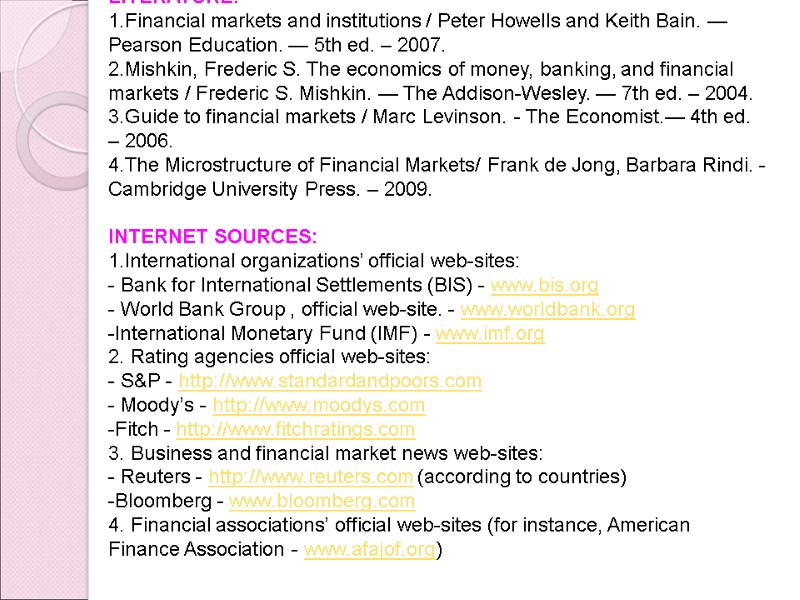
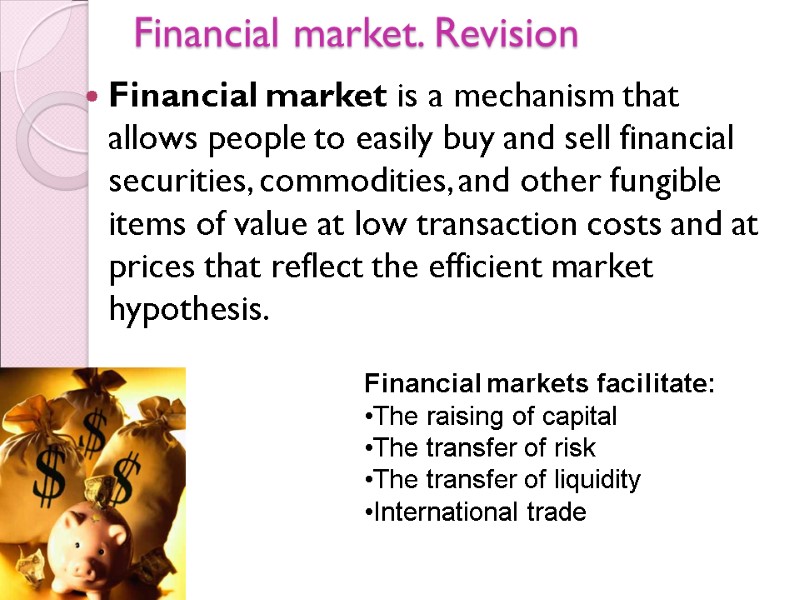
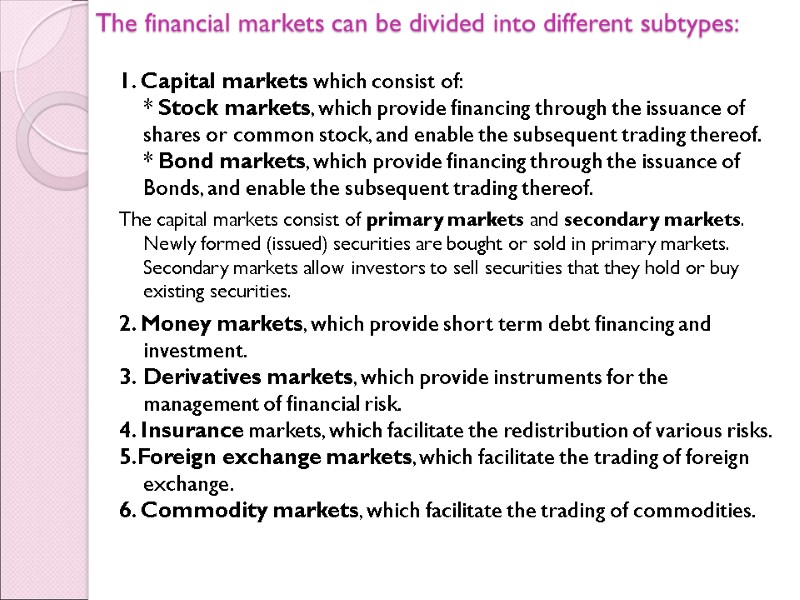
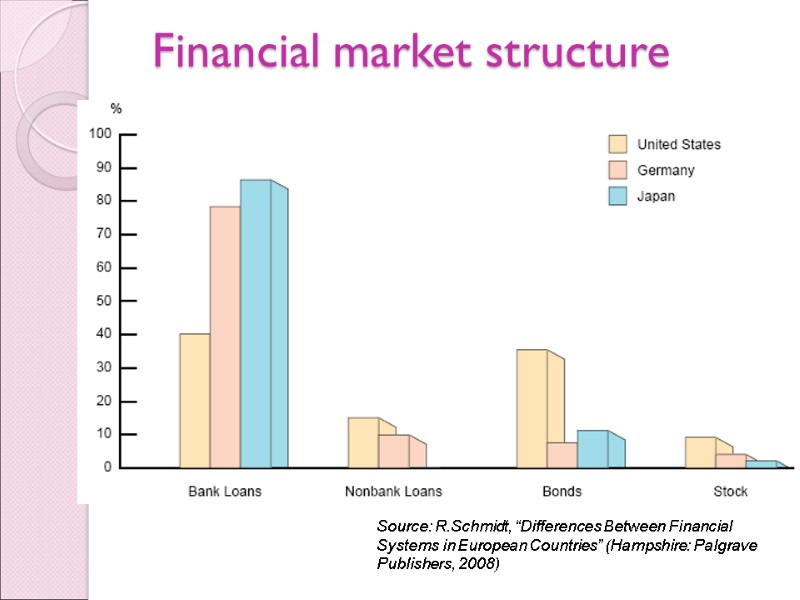
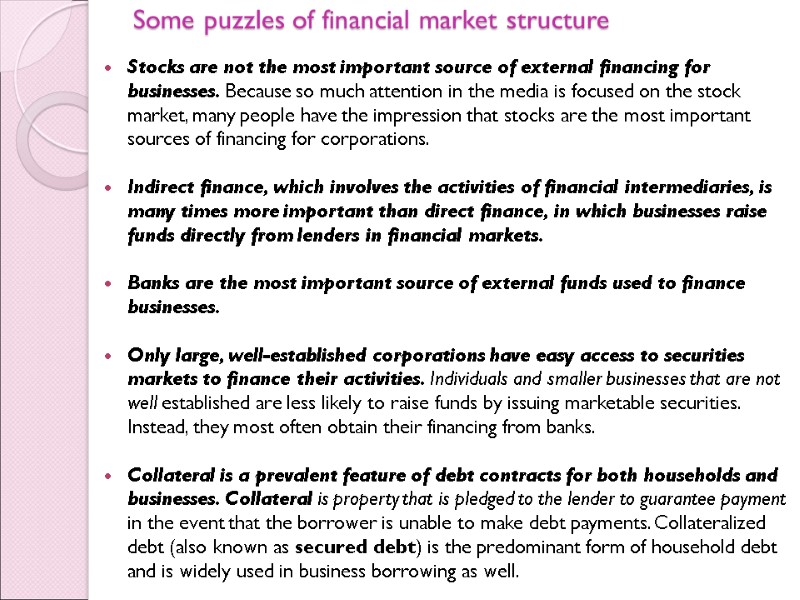

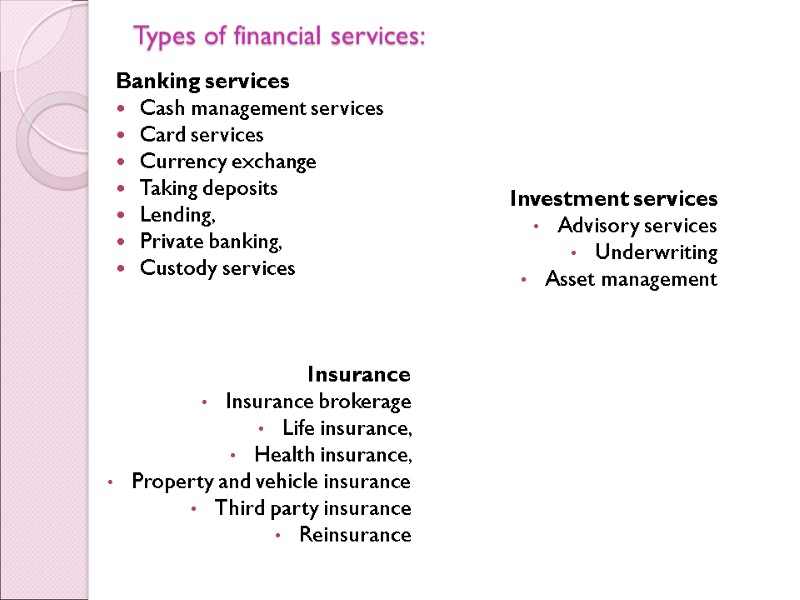
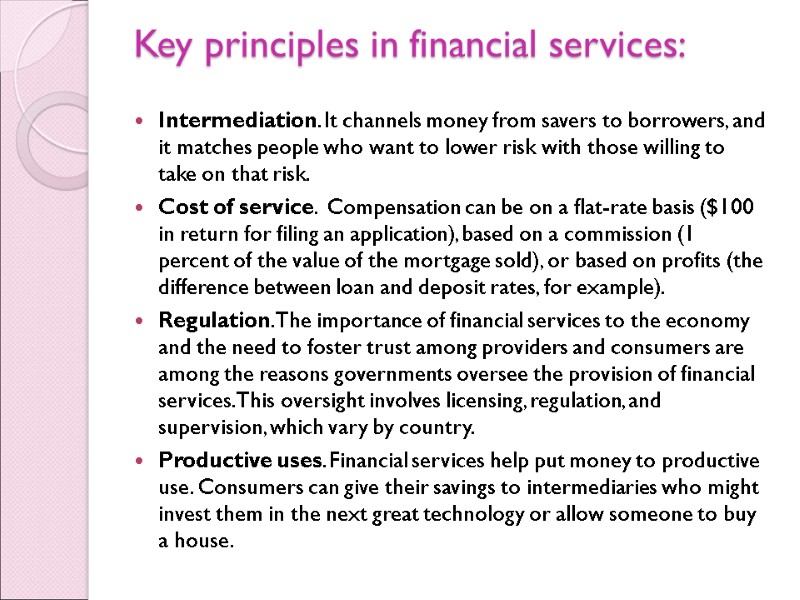

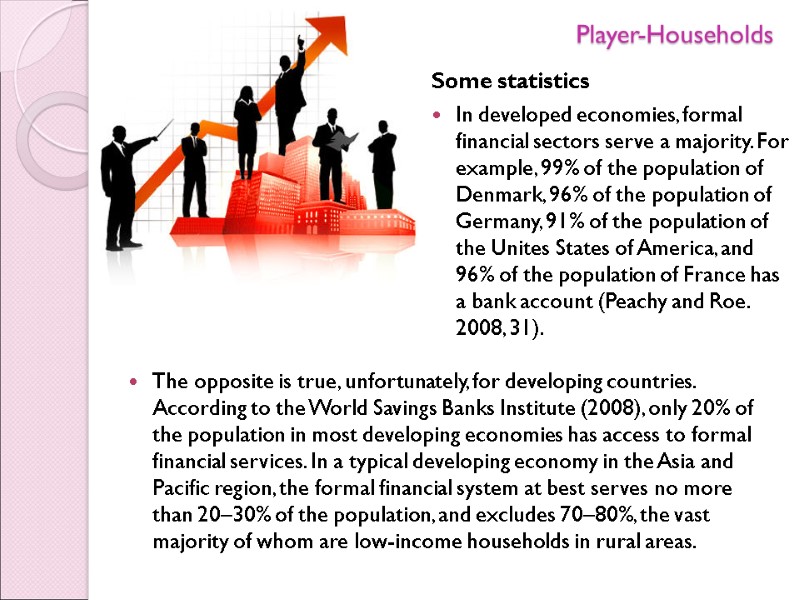
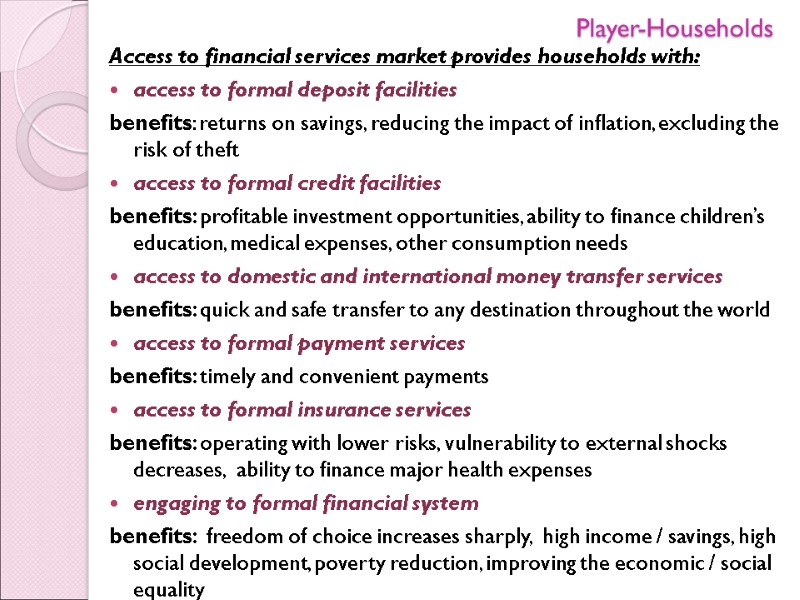
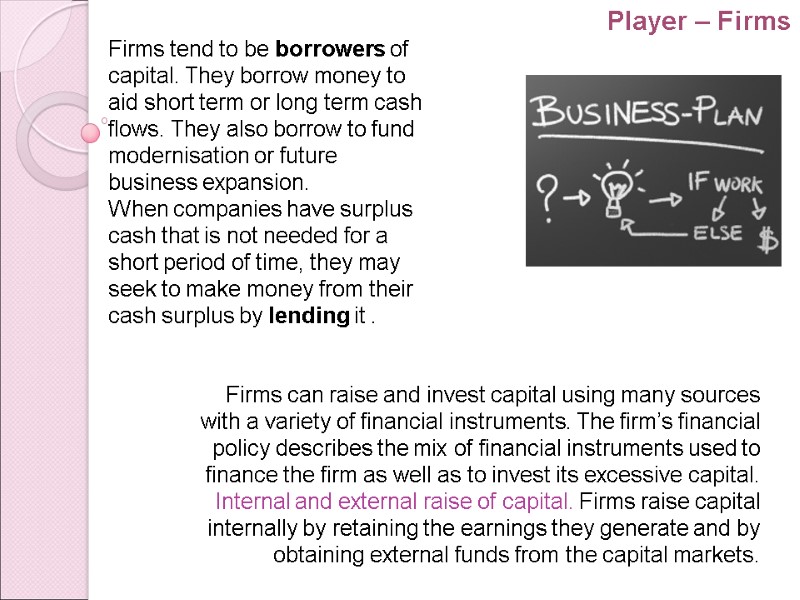

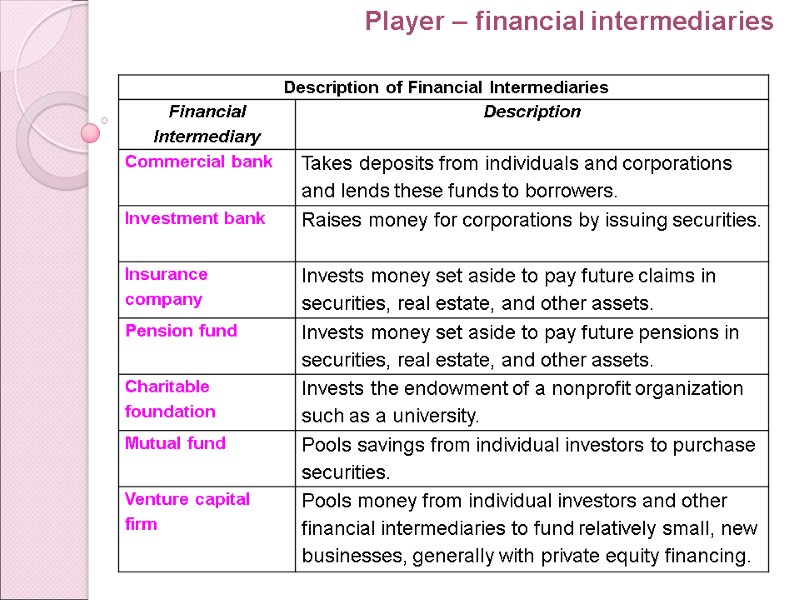
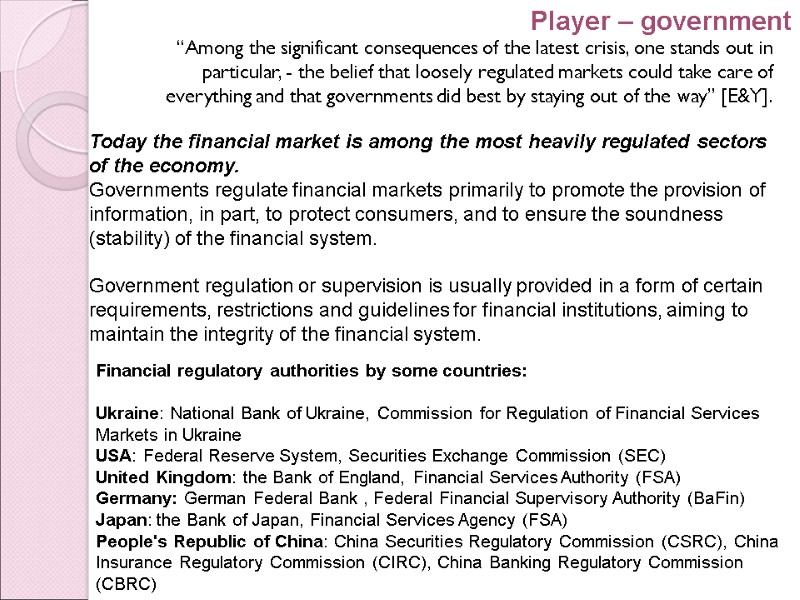
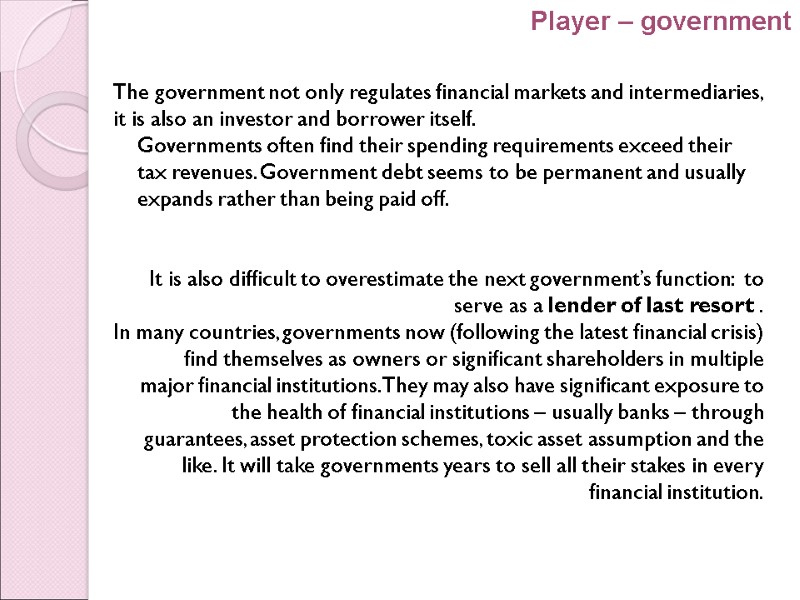
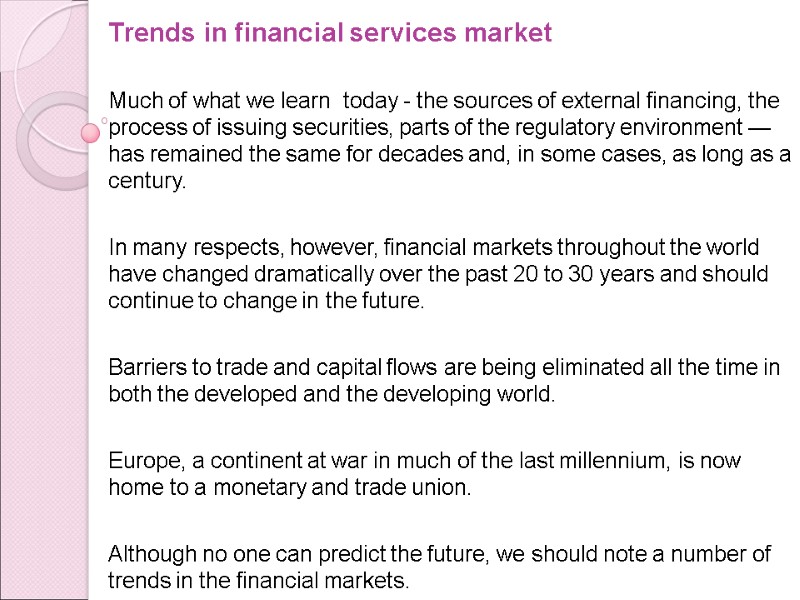
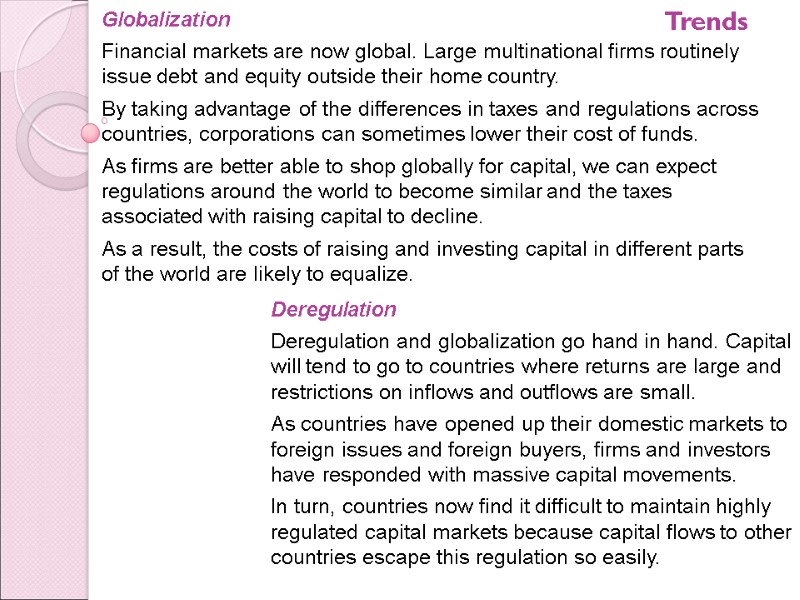
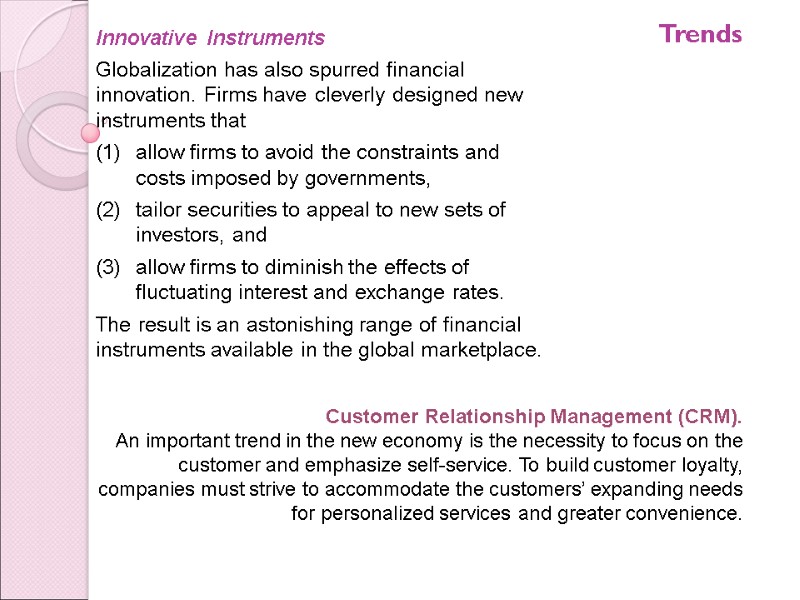
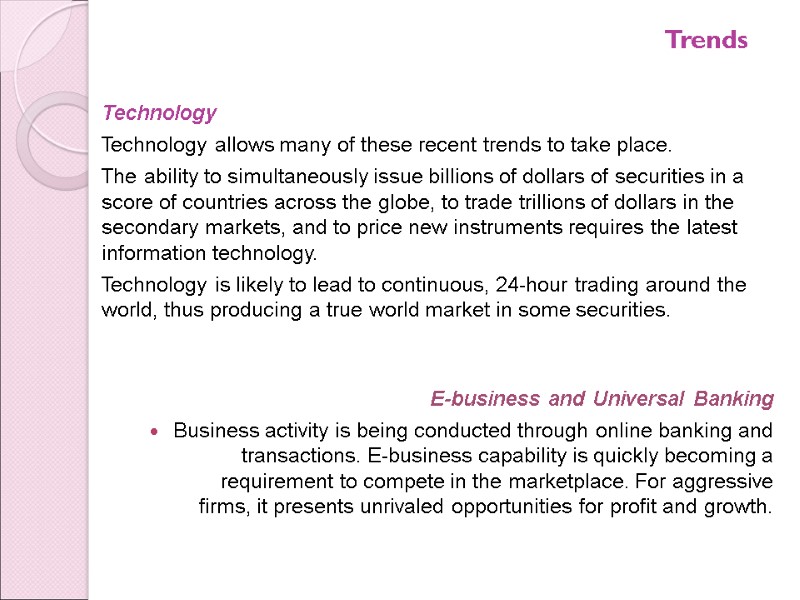
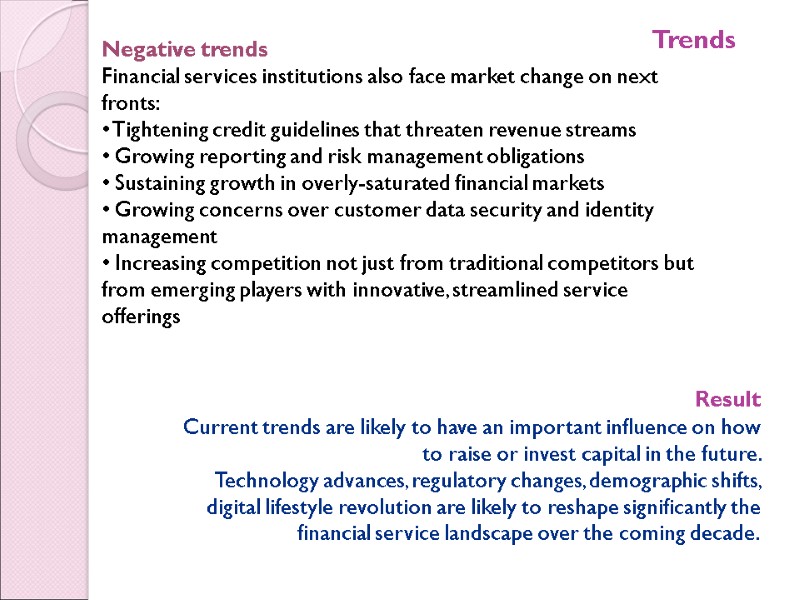
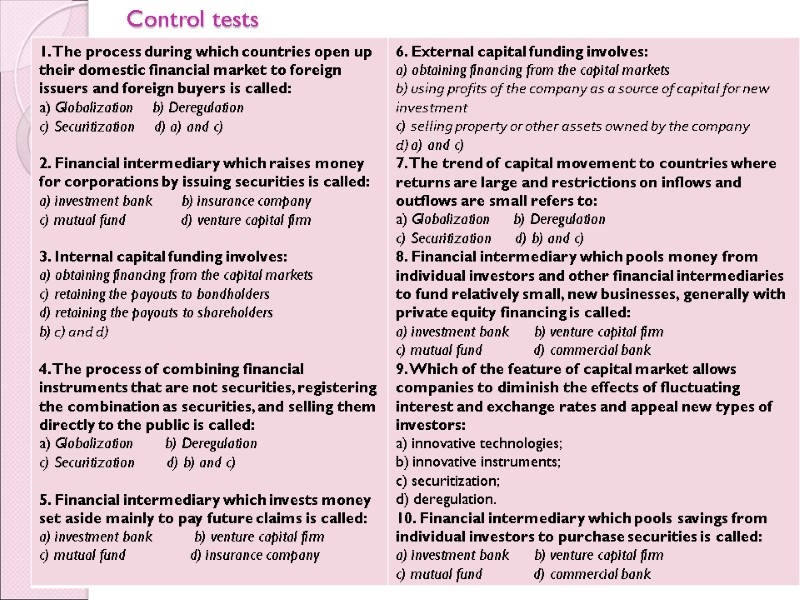

220-1_fin.market_revision.ppt
- Количество слайдов: 24
 Financial Innovation and Financial Engineering
Financial Innovation and Financial Engineering
 LITERATURE: Financial markets and institutions / Peter Howells and Keith Bain. — Pearson Education. — 5th ed. – 2007. Mishkin, Frederic S. The economics of money, banking, and financial markets / Frederic S. Mishkin. — The Addison-Wesley. — 7th ed. – 2004. Guide to financial markets / Marc Levinson. - The Economist.— 4th ed. – 2006. The Microstructure of Financial Markets/ Frank de Jong, Barbara Rindi. - Cambridge University Press. – 2009. INTERNET SOURCES: International organizations’ official web-sites: - Bank for International Settlements (BIS) - www.bis.org - World Bank Group , official web-site. - www.worldbank.org International Monetary Fund (IMF) - www.imf.org 2. Rating agencies official web-sites: - S&P - http://www.standardandpoors.com - Moody’s - http://www.moodys.com Fitch - http://www.fitchratings.com 3. Business and financial market news web-sites: - Reuters - http://www.reuters.com (according to countries) Bloomberg - www.bloomberg.com 4. Financial associations’ official web-sites (for instance, American Finance Association - www.afajof.org)
LITERATURE: Financial markets and institutions / Peter Howells and Keith Bain. — Pearson Education. — 5th ed. – 2007. Mishkin, Frederic S. The economics of money, banking, and financial markets / Frederic S. Mishkin. — The Addison-Wesley. — 7th ed. – 2004. Guide to financial markets / Marc Levinson. - The Economist.— 4th ed. – 2006. The Microstructure of Financial Markets/ Frank de Jong, Barbara Rindi. - Cambridge University Press. – 2009. INTERNET SOURCES: International organizations’ official web-sites: - Bank for International Settlements (BIS) - www.bis.org - World Bank Group , official web-site. - www.worldbank.org International Monetary Fund (IMF) - www.imf.org 2. Rating agencies official web-sites: - S&P - http://www.standardandpoors.com - Moody’s - http://www.moodys.com Fitch - http://www.fitchratings.com 3. Business and financial market news web-sites: - Reuters - http://www.reuters.com (according to countries) Bloomberg - www.bloomberg.com 4. Financial associations’ official web-sites (for instance, American Finance Association - www.afajof.org)
 Financial market. Revision Financial market is a mechanism that allows people to easily buy and sell financial securities, commodities, and other fungible items of value at low transaction costs and at prices that reflect the efficient market hypothesis. Financial markets facilitate: The raising of capital The transfer of risk The transfer of liquidity International trade
Financial market. Revision Financial market is a mechanism that allows people to easily buy and sell financial securities, commodities, and other fungible items of value at low transaction costs and at prices that reflect the efficient market hypothesis. Financial markets facilitate: The raising of capital The transfer of risk The transfer of liquidity International trade
 The financial markets can be divided into different subtypes: 1. Capital markets which consist of: * Stock markets, which provide financing through the issuance of shares or common stock, and enable the subsequent trading thereof. * Bond markets, which provide financing through the issuance of Bonds, and enable the subsequent trading thereof. The capital markets consist of primary markets and secondary markets. Newly formed (issued) securities are bought or sold in primary markets. Secondary markets allow investors to sell securities that they hold or buy existing securities. 2. Money markets, which provide short term debt financing and investment. 3. Derivatives markets, which provide instruments for the management of financial risk. 4. Insurance markets, which facilitate the redistribution of various risks. 5.Foreign exchange markets, which facilitate the trading of foreign exchange. 6. Commodity markets, which facilitate the trading of commodities.
The financial markets can be divided into different subtypes: 1. Capital markets which consist of: * Stock markets, which provide financing through the issuance of shares or common stock, and enable the subsequent trading thereof. * Bond markets, which provide financing through the issuance of Bonds, and enable the subsequent trading thereof. The capital markets consist of primary markets and secondary markets. Newly formed (issued) securities are bought or sold in primary markets. Secondary markets allow investors to sell securities that they hold or buy existing securities. 2. Money markets, which provide short term debt financing and investment. 3. Derivatives markets, which provide instruments for the management of financial risk. 4. Insurance markets, which facilitate the redistribution of various risks. 5.Foreign exchange markets, which facilitate the trading of foreign exchange. 6. Commodity markets, which facilitate the trading of commodities.
 Financial market structure Source: R.Schmidt, “Differences Between Financial Systems in European Countries” (Hampshire: Palgrave Publishers, 2008)
Financial market structure Source: R.Schmidt, “Differences Between Financial Systems in European Countries” (Hampshire: Palgrave Publishers, 2008)
 Some puzzles of financial market structure Stocks are not the most important source of external financing for businesses. Because so much attention in the media is focused on the stock market, many people have the impression that stocks are the most important sources of financing for corporations. Indirect finance, which involves the activities of financial intermediaries, is many times more important than direct finance, in which businesses raise funds directly from lenders in financial markets. Banks are the most important source of external funds used to finance businesses. Only large, well-established corporations have easy access to securities markets to finance their activities. Individuals and smaller businesses that are not well established are less likely to raise funds by issuing marketable securities. Instead, they most often obtain their financing from banks. Collateral is a prevalent feature of debt contracts for both households and businesses. Collateral is property that is pledged to the lender to guarantee payment in the event that the borrower is unable to make debt payments. Collateralized debt (also known as secured debt) is the predominant form of household debt and is widely used in business borrowing as well.
Some puzzles of financial market structure Stocks are not the most important source of external financing for businesses. Because so much attention in the media is focused on the stock market, many people have the impression that stocks are the most important sources of financing for corporations. Indirect finance, which involves the activities of financial intermediaries, is many times more important than direct finance, in which businesses raise funds directly from lenders in financial markets. Banks are the most important source of external funds used to finance businesses. Only large, well-established corporations have easy access to securities markets to finance their activities. Individuals and smaller businesses that are not well established are less likely to raise funds by issuing marketable securities. Instead, they most often obtain their financing from banks. Collateral is a prevalent feature of debt contracts for both households and businesses. Collateral is property that is pledged to the lender to guarantee payment in the event that the borrower is unable to make debt payments. Collateralized debt (also known as secured debt) is the predominant form of household debt and is widely used in business borrowing as well.
 What is a financial service? Among the things money can buy, there is a distinction between a good (something tangible that lasts) and a service (a task that someone performs for you). Financial services refer to services provided by the financial institutions such as banks, insurance companies, credit unions, stock brokerages, investment funds and others. A financial service is best described as the process of buying and selling of the financial good. In other words, it involves the transaction required to obtain the financial good. The financial sector covers many different types of transactions in such areas as real estate, consumer or corporate finance, banking, insurance and other. It also covers a broad spectrum of investment funding, including securities.
What is a financial service? Among the things money can buy, there is a distinction between a good (something tangible that lasts) and a service (a task that someone performs for you). Financial services refer to services provided by the financial institutions such as banks, insurance companies, credit unions, stock brokerages, investment funds and others. A financial service is best described as the process of buying and selling of the financial good. In other words, it involves the transaction required to obtain the financial good. The financial sector covers many different types of transactions in such areas as real estate, consumer or corporate finance, banking, insurance and other. It also covers a broad spectrum of investment funding, including securities.
 Types of financial services: Banking services Cash management services Card services Currency exchange Taking deposits Lending, Private banking, Custody services Insurance Insurance brokerage Life insurance, Health insurance, Property and vehicle insurance Third party insurance Reinsurance Investment services Advisory services Underwriting Asset management
Types of financial services: Banking services Cash management services Card services Currency exchange Taking deposits Lending, Private banking, Custody services Insurance Insurance brokerage Life insurance, Health insurance, Property and vehicle insurance Third party insurance Reinsurance Investment services Advisory services Underwriting Asset management
 Key principles in financial services: Intermediation. It channels money from savers to borrowers, and it matches people who want to lower risk with those willing to take on that risk. Cost of service. Compensation can be on a flat-rate basis ($100 in return for filing an application), based on a commission (1 percent of the value of the mortgage sold), or based on profits (the difference between loan and deposit rates, for example). Regulation. The importance of financial services to the economy and the need to foster trust among providers and consumers are among the reasons governments oversee the provision of financial services. This oversight involves licensing, regulation, and supervision, which vary by country. Productive uses. Financial services help put money to productive use. Consumers can give their savings to intermediaries who might invest them in the next great technology or allow someone to buy a house.
Key principles in financial services: Intermediation. It channels money from savers to borrowers, and it matches people who want to lower risk with those willing to take on that risk. Cost of service. Compensation can be on a flat-rate basis ($100 in return for filing an application), based on a commission (1 percent of the value of the mortgage sold), or based on profits (the difference between loan and deposit rates, for example). Regulation. The importance of financial services to the economy and the need to foster trust among providers and consumers are among the reasons governments oversee the provision of financial services. This oversight involves licensing, regulation, and supervision, which vary by country. Productive uses. Financial services help put money to productive use. Consumers can give their savings to intermediaries who might invest them in the next great technology or allow someone to buy a house.
 The players Households Firms Financial intermediaries and Government all play a role in the financial system of every developed economy.
The players Households Firms Financial intermediaries and Government all play a role in the financial system of every developed economy.
 Player-Households The opposite is true, unfortunately, for developing countries. According to the World Savings Banks Institute (2008), only 20% of the population in most developing economies has access to formal financial services. In a typical developing economy in the Asia and Pacific region, the formal financial system at best serves no more than 20–30% of the population, and excludes 70–80%, the vast majority of whom are low-income households in rural areas. Some statistics In developed economies, formal financial sectors serve a majority. For example, 99% of the population of Denmark, 96% of the population of Germany, 91% of the population of the Unites States of America, and 96% of the population of France has a bank account (Peachy and Roe. 2008, 31).
Player-Households The opposite is true, unfortunately, for developing countries. According to the World Savings Banks Institute (2008), only 20% of the population in most developing economies has access to formal financial services. In a typical developing economy in the Asia and Pacific region, the formal financial system at best serves no more than 20–30% of the population, and excludes 70–80%, the vast majority of whom are low-income households in rural areas. Some statistics In developed economies, formal financial sectors serve a majority. For example, 99% of the population of Denmark, 96% of the population of Germany, 91% of the population of the Unites States of America, and 96% of the population of France has a bank account (Peachy and Roe. 2008, 31).
 Access to financial services market provides households with: access to formal deposit facilities benefits: returns on savings, reducing the impact of inflation, excluding the risk of theft access to formal credit facilities benefits: profitable investment opportunities, ability to finance children’s education, medical expenses, other consumption needs access to domestic and international money transfer services benefits: quick and safe transfer to any destination throughout the world access to formal payment services benefits: timely and convenient payments access to formal insurance services benefits: operating with lower risks, vulnerability to external shocks decreases, ability to finance major health expenses engaging to formal financial system benefits: freedom of choice increases sharply, high income / savings, high social development, poverty reduction, improving the economic / social equality Player-Households
Access to financial services market provides households with: access to formal deposit facilities benefits: returns on savings, reducing the impact of inflation, excluding the risk of theft access to formal credit facilities benefits: profitable investment opportunities, ability to finance children’s education, medical expenses, other consumption needs access to domestic and international money transfer services benefits: quick and safe transfer to any destination throughout the world access to formal payment services benefits: timely and convenient payments access to formal insurance services benefits: operating with lower risks, vulnerability to external shocks decreases, ability to finance major health expenses engaging to formal financial system benefits: freedom of choice increases sharply, high income / savings, high social development, poverty reduction, improving the economic / social equality Player-Households
 Firms can raise and invest capital using many sources with a variety of financial instruments. The firm’s financial policy describes the mix of financial instruments used to finance the firm as well as to invest its excessive capital. Internal and external raise of capital. Firms raise capital internally by retaining the earnings they generate and by obtaining external funds from the capital markets. Player – Firms Firms tend to be borrowers of capital. They borrow money to aid short term or long term cash flows. They also borrow to fund modernisation or future business expansion. When companies have surplus cash that is not needed for a short period of time, they may seek to make money from their cash surplus by lending it .
Firms can raise and invest capital using many sources with a variety of financial instruments. The firm’s financial policy describes the mix of financial instruments used to finance the firm as well as to invest its excessive capital. Internal and external raise of capital. Firms raise capital internally by retaining the earnings they generate and by obtaining external funds from the capital markets. Player – Firms Firms tend to be borrowers of capital. They borrow money to aid short term or long term cash flows. They also borrow to fund modernisation or future business expansion. When companies have surplus cash that is not needed for a short period of time, they may seek to make money from their cash surplus by lending it .
 Financial intermediary - a financial institution that stands between counterparties in a transaction and connects surplus and deficit agents. For example, such financial intermediaries as banks collect the savings of individuals and corporations and funnel them to firms that use the money to finance their investments in plant, equipment, research and development, and so forth. Some of the financial intermediaries are described in next Exhibit. Player – financial intermediaries
Financial intermediary - a financial institution that stands between counterparties in a transaction and connects surplus and deficit agents. For example, such financial intermediaries as banks collect the savings of individuals and corporations and funnel them to firms that use the money to finance their investments in plant, equipment, research and development, and so forth. Some of the financial intermediaries are described in next Exhibit. Player – financial intermediaries
 Player – financial intermediaries
Player – financial intermediaries
 “Among the significant consequences of the latest crisis, one stands out in particular, - the belief that loosely regulated markets could take care of everything and that governments did best by staying out of the way” [E&Y]. Player – government Financial regulatory authorities by some countries: Ukraine: National Bank of Ukraine, Commission for Regulation of Financial Services Markets in Ukraine USA: Federal Reserve System, Securities Exchange Commission (SEC) United Kingdom: the Bank of England, Financial Services Authority (FSA) Germany: German Federal Bank , Federal Financial Supervisory Authority (BaFin) Japan: the Bank of Japan, Financial Services Agency (FSA) People's Republic of China: China Securities Regulatory Commission (CSRC), China Insurance Regulatory Commission (CIRC), China Banking Regulatory Commission (CBRC) Today the financial market is among the most heavily regulated sectors of the economy. Governments regulate financial markets primarily to promote the provision of information, in part, to protect consumers, and to ensure the soundness (stability) of the financial system. Government regulation or supervision is usually provided in a form of certain requirements, restrictions and guidelines for financial institutions, aiming to maintain the integrity of the financial system.
“Among the significant consequences of the latest crisis, one stands out in particular, - the belief that loosely regulated markets could take care of everything and that governments did best by staying out of the way” [E&Y]. Player – government Financial regulatory authorities by some countries: Ukraine: National Bank of Ukraine, Commission for Regulation of Financial Services Markets in Ukraine USA: Federal Reserve System, Securities Exchange Commission (SEC) United Kingdom: the Bank of England, Financial Services Authority (FSA) Germany: German Federal Bank , Federal Financial Supervisory Authority (BaFin) Japan: the Bank of Japan, Financial Services Agency (FSA) People's Republic of China: China Securities Regulatory Commission (CSRC), China Insurance Regulatory Commission (CIRC), China Banking Regulatory Commission (CBRC) Today the financial market is among the most heavily regulated sectors of the economy. Governments regulate financial markets primarily to promote the provision of information, in part, to protect consumers, and to ensure the soundness (stability) of the financial system. Government regulation or supervision is usually provided in a form of certain requirements, restrictions and guidelines for financial institutions, aiming to maintain the integrity of the financial system.
 The government not only regulates financial markets and intermediaries, it is also an investor and borrower itself. Governments often find their spending requirements exceed their tax revenues. Government debt seems to be permanent and usually expands rather than being paid off. It is also difficult to overestimate the next government’s function: to serve as a lender of last resort . In many countries, governments now (following the latest financial crisis) find themselves as owners or significant shareholders in multiple major financial institutions. They may also have significant exposure to the health of financial institutions – usually banks – through guarantees, asset protection schemes, toxic asset assumption and the like. It will take governments years to sell all their stakes in every financial institution. Player – government
The government not only regulates financial markets and intermediaries, it is also an investor and borrower itself. Governments often find their spending requirements exceed their tax revenues. Government debt seems to be permanent and usually expands rather than being paid off. It is also difficult to overestimate the next government’s function: to serve as a lender of last resort . In many countries, governments now (following the latest financial crisis) find themselves as owners or significant shareholders in multiple major financial institutions. They may also have significant exposure to the health of financial institutions – usually banks – through guarantees, asset protection schemes, toxic asset assumption and the like. It will take governments years to sell all their stakes in every financial institution. Player – government
 Trends in financial services market Much of what we learn today - the sources of external financing, the process of issuing securities, parts of the regulatory environment — has remained the same for decades and, in some cases, as long as a century. In many respects, however, financial markets throughout the world have changed dramatically over the past 20 to 30 years and should continue to change in the future. Barriers to trade and capital flows are being eliminated all the time in both the developed and the developing world. Europe, a continent at war in much of the last millennium, is now home to a monetary and trade union. Although no one can predict the future, we should note a number of trends in the financial markets.
Trends in financial services market Much of what we learn today - the sources of external financing, the process of issuing securities, parts of the regulatory environment — has remained the same for decades and, in some cases, as long as a century. In many respects, however, financial markets throughout the world have changed dramatically over the past 20 to 30 years and should continue to change in the future. Barriers to trade and capital flows are being eliminated all the time in both the developed and the developing world. Europe, a continent at war in much of the last millennium, is now home to a monetary and trade union. Although no one can predict the future, we should note a number of trends in the financial markets.
 Globalization Financial markets are now global. Large multinational firms routinely issue debt and equity outside their home country. By taking advantage of the differences in taxes and regulations across countries, corporations can sometimes lower their cost of funds. As firms are better able to shop globally for capital, we can expect regulations around the world to become similar and the taxes associated with raising capital to decline. As a result, the costs of raising and investing capital in different parts of the world are likely to equalize. Trends Deregulation Deregulation and globalization go hand in hand. Capital will tend to go to countries where returns are large and restrictions on inflows and outflows are small. As countries have opened up their domestic markets to foreign issues and foreign buyers, firms and investors have responded with massive capital movements. In turn, countries now find it difficult to maintain highly regulated capital markets because capital flows to other countries escape this regulation so easily.
Globalization Financial markets are now global. Large multinational firms routinely issue debt and equity outside their home country. By taking advantage of the differences in taxes and regulations across countries, corporations can sometimes lower their cost of funds. As firms are better able to shop globally for capital, we can expect regulations around the world to become similar and the taxes associated with raising capital to decline. As a result, the costs of raising and investing capital in different parts of the world are likely to equalize. Trends Deregulation Deregulation and globalization go hand in hand. Capital will tend to go to countries where returns are large and restrictions on inflows and outflows are small. As countries have opened up their domestic markets to foreign issues and foreign buyers, firms and investors have responded with massive capital movements. In turn, countries now find it difficult to maintain highly regulated capital markets because capital flows to other countries escape this regulation so easily.
 Trends Innovative Instruments Globalization has also spurred financial innovation. Firms have cleverly designed new instruments that allow firms to avoid the constraints and costs imposed by governments, tailor securities to appeal to new sets of investors, and allow firms to diminish the effects of fluctuating interest and exchange rates. The result is an astonishing range of financial instruments available in the global marketplace. Customer Relationship Management (CRM). An important trend in the new economy is the necessity to focus on the customer and emphasize self-service. To build customer loyalty, companies must strive to accommodate the customers’ expanding needs for personalized services and greater convenience.
Trends Innovative Instruments Globalization has also spurred financial innovation. Firms have cleverly designed new instruments that allow firms to avoid the constraints and costs imposed by governments, tailor securities to appeal to new sets of investors, and allow firms to diminish the effects of fluctuating interest and exchange rates. The result is an astonishing range of financial instruments available in the global marketplace. Customer Relationship Management (CRM). An important trend in the new economy is the necessity to focus on the customer and emphasize self-service. To build customer loyalty, companies must strive to accommodate the customers’ expanding needs for personalized services and greater convenience.
 E-business and Universal Banking Business activity is being conducted through online banking and transactions. E-business capability is quickly becoming a requirement to compete in the marketplace. For aggressive firms, it presents unrivaled opportunities for profit and growth. Technology Technology allows many of these recent trends to take place. The ability to simultaneously issue billions of dollars of securities in a score of countries across the globe, to trade trillions of dollars in the secondary markets, and to price new instruments requires the latest information technology. Technology is likely to lead to continuous, 24-hour trading around the world, thus producing a true world market in some securities. Trends
E-business and Universal Banking Business activity is being conducted through online banking and transactions. E-business capability is quickly becoming a requirement to compete in the marketplace. For aggressive firms, it presents unrivaled opportunities for profit and growth. Technology Technology allows many of these recent trends to take place. The ability to simultaneously issue billions of dollars of securities in a score of countries across the globe, to trade trillions of dollars in the secondary markets, and to price new instruments requires the latest information technology. Technology is likely to lead to continuous, 24-hour trading around the world, thus producing a true world market in some securities. Trends
 Negative trends Financial services institutions also face market change on next fronts: Tightening credit guidelines that threaten revenue streams Growing reporting and risk management obligations Sustaining growth in overly-saturated financial markets Growing concerns over customer data security and identity management Increasing competition not just from traditional competitors but from emerging players with innovative, streamlined service offerings Result Current trends are likely to have an important influence on how to raise or invest capital in the future. Technology advances, regulatory changes, demographic shifts, digital lifestyle revolution are likely to reshape significantly the financial service landscape over the coming decade. Trends
Negative trends Financial services institutions also face market change on next fronts: Tightening credit guidelines that threaten revenue streams Growing reporting and risk management obligations Sustaining growth in overly-saturated financial markets Growing concerns over customer data security and identity management Increasing competition not just from traditional competitors but from emerging players with innovative, streamlined service offerings Result Current trends are likely to have an important influence on how to raise or invest capital in the future. Technology advances, regulatory changes, demographic shifts, digital lifestyle revolution are likely to reshape significantly the financial service landscape over the coming decade. Trends
 Control tests
Control tests
 THANK YOU FOR ATTENTION!
THANK YOU FOR ATTENTION!
